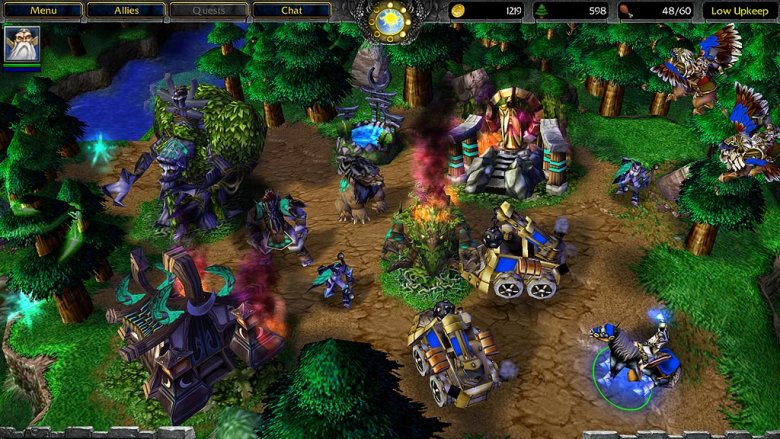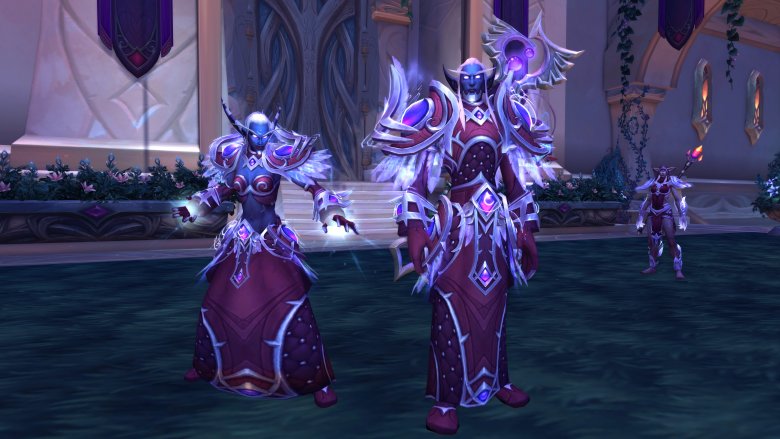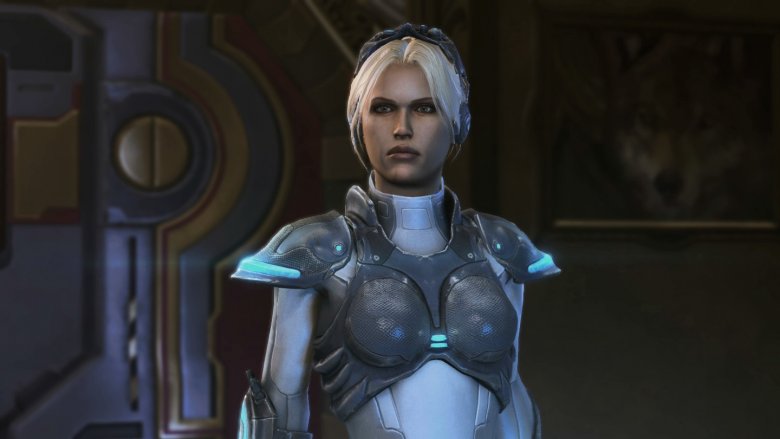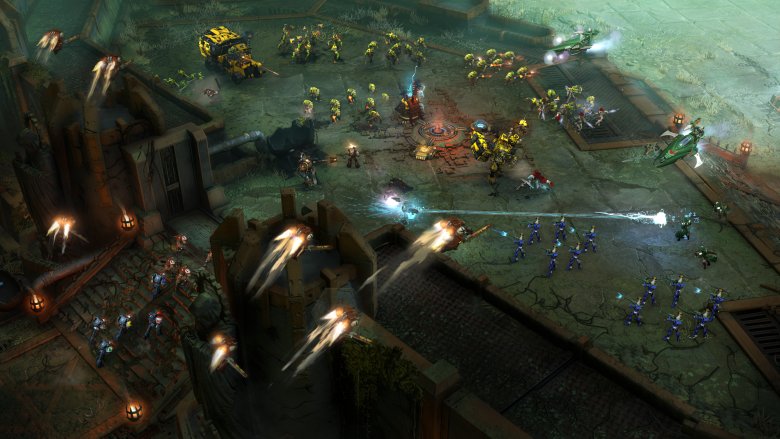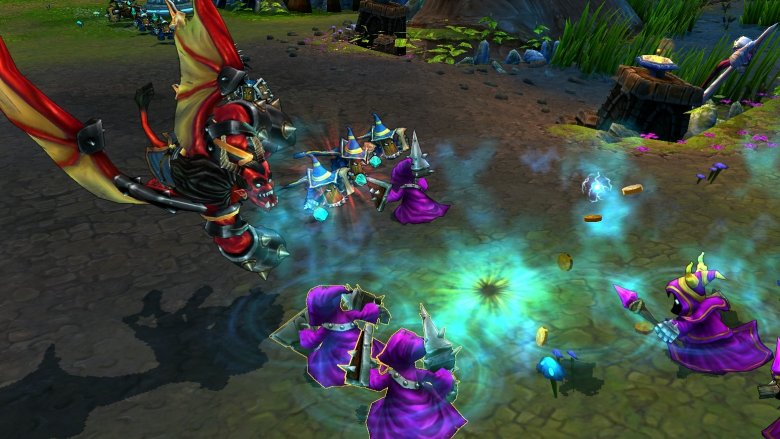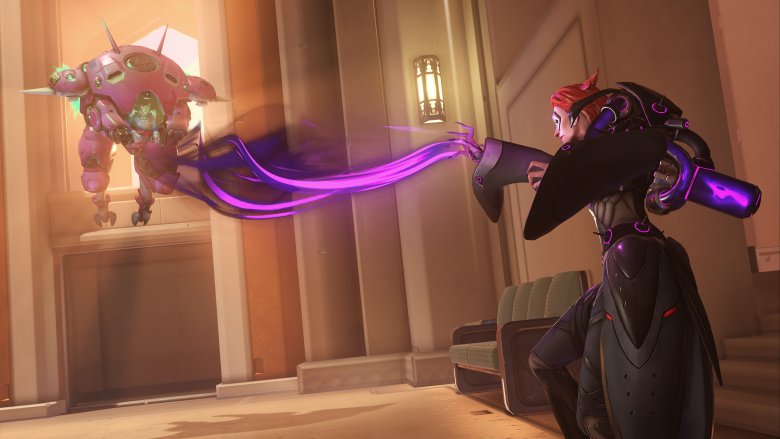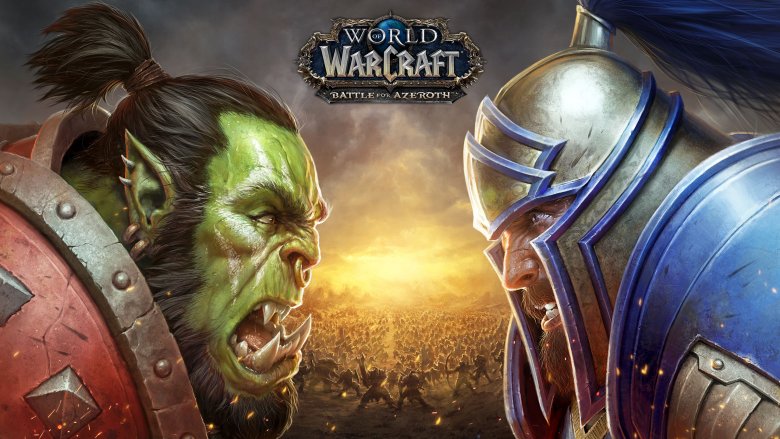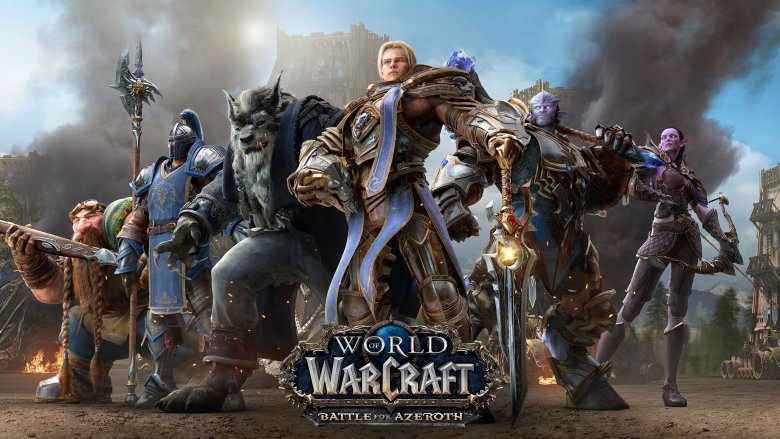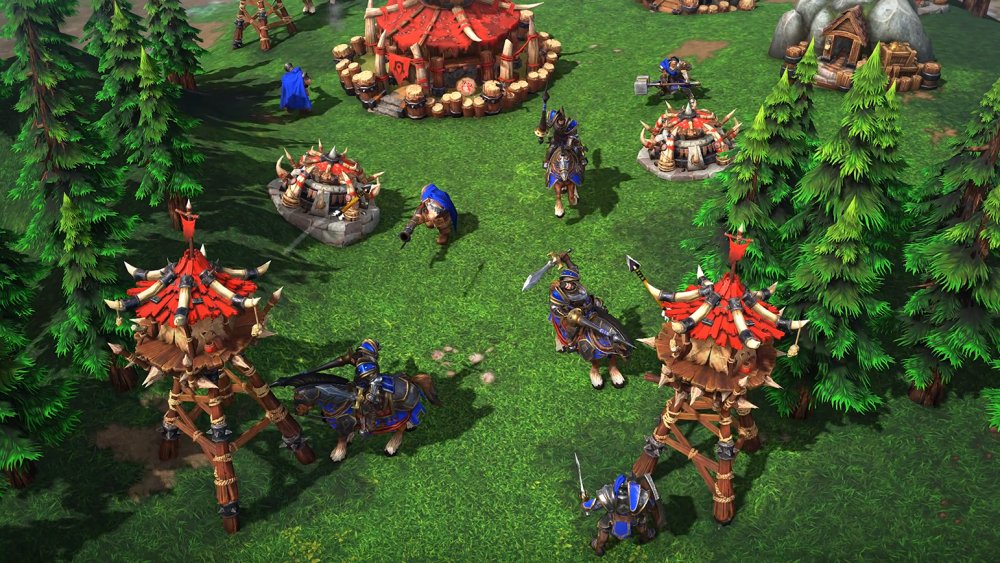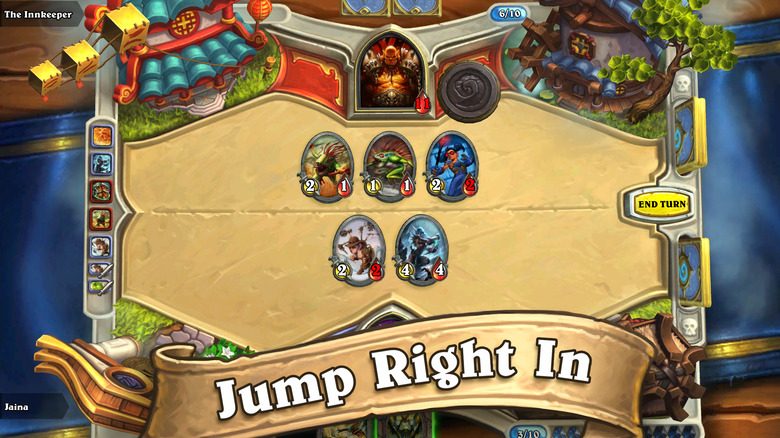Why Blizzard Won't Release Warcraft 4
Once upon a time, Blizzard Entertainment was a relatively small developer. Their first game was just a simple driving game called RPM Racing, and down the road they would create a few memorable titles like The Lost Vikings and Blackthorne. But just a few years into their existence, they crafted a new entry into the brand-new real-time strategy (RTS) genre. Taking influence from the groundbreaking Dune 2, Blizzard made a game that was deep yet accessible, complex yet manageable. Warcraft: Orcs & Humans was a smash hit for the company, and a major milestone on their way to becoming the juggernaut developer they are today.
The first Warcraft was quickly followed by Warcraft 2: Tides of Darkness, and later by Warcraft 3: Reign of Chaos. All three games and their expansions are considered classics of the genre, and in true Blizzard fashion, they're still played by gamers and referenced by designers even today. What to do with a blockbuster franchise beloved the world over? The obvious answer would be to make a fourth game. But the Irvine, California company has never taken the obvious route, and now, fifteen years since Warcraft 3, no new RTS game is in sight. Why? Well, there are some pretty good reasons why Blizzard won't release Warcraft 4.
The original Warcraft team split into two
The team at Blizzard had made Warcraft and its sequel, Warcraft 2, and then rolled straight into StarCraft. While an entirely different team, Blizzard North, worked on the Diablo franchise, this core team of Blizzard veterans had a decision to make: stick with the RTS genre they'd been in for a few years now, or go off and explore new ideas? The answer, it turned out, was "both."
The original Blizzard crew split into two different teams, pursuing different projects. One team (called Team 1) stayed in the strategy space, and eventually delivered Warcraft 3, something of a hybrid between conventional RTS and the action-RPG style pioneered by Diablo. The other team, Team 2, tested out a few different prototypes before landing on the idea of a massively-multiplayer online game, better known as an MMO. At the time, Ultima Online and EverQuest were the hottest new games in the industry, and their subscription-based business model offered bold new opportunities for studios.
Team 2 spent quite a few years developing their MMO, and at some point early on, the decision was made to set their game not in a brand-new IP, but in their established Warcraft franchise. This meant that, for a while, two separate teams within Blizzard were each making different games set in the same story universe. The resulting MMO was called World of Warcraft, and it would change Blizzard — and the entire industry — forever.
Warcraft is WoW and WoW is Warcraft
You can't overuse superlatives when talking about World of Warcraft. With 12 million paying subscribers at its peak, WoW was, for years, the biggest, most talked-about, most influential, and most profitable game on Earth. From the MMO's release in 2004 through StarCraft 2's debut in 2010, Blizzard did nothing but release content for WoW. The game's various expansions extended the storyline from Warcraft 3, bringing to a resolution the tales of great villains like Illidan and Arthas.
So, with the original RTS team split up and World of Warcraft sucking all the oxygen out of Blizzard's development resources, a lot of the driving impetus behind the Warcraft strategy games had been bulldozed over. Since the story was being continued in the MMO anyway, it wasn't like Blizzard had a creative need to produce a Warcraft 4. Simply put, the entire Warcraft intellectual property had reduced down to a single, if colossal, game.
After fifteen years, there's now an entire generation of hardcore Warcraft fans who weren't even alive the last time an RTS entry in the franchise came out. For millions of players around the world, Warcraft is an MMO about playing as a single character, not a strategy game about managing an army of dozens. The brand itself has a different meaning than it did when it began. A game called Warcraft 4 would be the old Warcraft, not the modern incarnation.
StarCraft Zerg-rushed Warcraft 4
Meanwhile, the members of the original team who had stuck with the RTS genre were hard at work — when they weren't being relocated to work on World of Warcraft – on a sequel to a different strategy franchise. StarCraft 2 took a dozen years to finally release, and even when it did, it had two massive expansions and a thriving esports scene to attend to. In other words, Team 1 has stayed busy on StarCraft 2 since Warcraft 3 wrapped up, and shows no signs of slowing down now.
In fact, as of late-2017, StarCraft 2 moved into free-to-play territory. Part of this involves a commitment on Blizzard's part to adding new content and features into the game on an ongoing basis. Separately, Blizzard has worked on creative extensions of the game engine's capabilities: namely, the Nova Covert Ops series of single-player, single-character missions. They also created the MOBA Heroes of the Storm. In other words, Team 1 has been nothing if not busy. If all that wasn't enough, Team 1 also appears to have worked on the canceled StarCraft shooter, since former Team 1 director Dustin Browder was involved in its development (and subsequently left Blizzard).
Team 1, then, has had little bandwidth outside of these projects to work on a Warcraft 4 project.
Warcraft 4's genre has had its base destroyed
Over the many years that Blizzard has spent making StarCraft 2, the industry around them has moved on from the RTS genre. Fewer and fewer games involve base-building, resource collection, and unit micromanagement. The MOBA genre, which stemmed from a popular Warcraft 3 mod, has ballooned into global popularity; by all indications, it has siphoned off would-be RTS players and captured their attentions. Relic Entertainment's 2017 game Dawn of War 3 attempted to blend RTS and MOBA elements together, but even that effort by a renowned studio ended in failure.
There are a number of possible reasons why RTS games no longer hold the appeal that they used to. For one thing, strategy games take a long, long time to learn, let alone master. In an era when gamers have more choices than ever before, any game that takes so long just to figure out will simply be abandoned in favor of titles that can be picked up faster (like, say, a MOBA). In addition, many of the most popular multiplayer experiences today – League of Legends, Call of Duty, Blizzard's own Overwatch — are team-based, letting players fight alongside friends or even match-made companions. RTS multiplayer, by contrast, is mostly a solo affair.
While Blizzard has the resources and the clout to ignore industry fads, even they have probably noticed the slow death of the RTS. It seems highly unlikely that they'd ever release another game in the original Warcraft/StarCraft mold. Blizzard would want anything with the Warcraft name on it to shine, not be buried on arrival.
The genre that came from a Warcraft 3 mod now dominates
Blizzard opened up Warcraft 3 to the modding community, letting fans create brand-new experiences out of the excellent core game. While there have been a lot of these over the years, one very clearly stood out from the pack: a team-based brawler in which each player took control of a single hero, fought small monsters and the other team to level up, and tried to destroy their base. It was called Defense of the Ancients. And it conquered the world.
Today, this innovative new genre is called MOBA, for Multiplayer Online Battle Arena. Riot Games' League of Legends grew into the biggest game — not just in the new category, but in the entire industry. Valve Software's Dota 2 is also a behemoth game with the biggest prize-pools in all of esports. Between these two games, the MOBA genre has taken over the overall conversation and the esports scene in general.
Trouble is, these are the rarefied heights that StarCraft and Warcraft 3 used to enjoy. In particular, StarCraft was the dominant esports title for over a decade, but today, its crown has been stolen by the MOBA craze. In this environment, the idea that an RTS can muscle in as a major player is a longshot at best. And Blizzard never wants to be anything other than a major player.
Warcraft 4 can't go on every platform
When they were just starting out, Blizzard was a console developer. Their early racing games were SNES exclusives, and their beloved Lost Vikings series was created originally for that console. But when their blockbusters started hitting shelves – Warcraft, Diablo, and StarCraft — they were all PC-exclusives. Then, of course, World of Warcraft swallowed the company whole, and their entire output for a decade was nothing but PC-only Warcraft games.
Clearly, those days are long behind them. Diablo 3 marked Blizzard's long-awaited return to consoles, which was hailed on release. Then came Hearthstone, which, in addition to PC, came to iOS and Android. Meanwhile, Overwatch began its rise to world dominance with a simultaneous release on PC, Xbox One, and the PlayStation 4. Blizzard is now officially a multiplatform developer.
Yet the RTS genre has always struggled on console. Strategy games require a lot of hotkeys and pinpoint precision clicks, and these are not qualities that controllers have. Or, for that matter, touchscreens. If Blizzard wants to continue making games for a variety of devices, an RTS seems like a bad choice. So a Warcraft 4 would find itself as a single-platform title, probably soaking up a lot of resources, when its developer could be making other things. Blizzard is likely to opt for the latter.
Blizzard won't be the Warcraft company again
Diablo 2 released in 2000, and its expansion Lord of Destruction came out a year later. After that, Blizzard released Warcraft, Warcraft, some more Warcraft, a little bit more Warcraft, and chased it all with some Warcraft. Between the third numbered game and its expansion, and then the MMO and all its many expansions, Blizzard in a very real sense became "the Warcraft company" for a solid nine years.
StarCraft 2 finally broke the cycle in 2010, but even that was a return to a pre-existing franchise. And then, Diablo 3. Even Hearthstone was branded as a Warcraft property. Which meant the original StarCraft back in '98 was that last new IP in the company's catalogue for eighteen years, finally ending with the release of Overwatch in 2016.
Going forward, Blizzard wants to avoid cranking out the same IPs over and over again. To do that, they wanted to set up a new division focused specifically on crafting new experiences. Who could they find to lead such a venture? No less than the company's own prodigal son: Allen Adham, the Blizzard co-founder who left in 2004. He is now the Senior Vice President in charge of crafting fresh new concepts. Blizzard is far more likely to give development resources to their returning hero, rather than to a new numbered entry in an older franchise — one which still has an MMO and a card game currently running.
The Warcraft masterminds are mostly gone now
Blizzard's been around for over 20 years now, and in that time, there's been more than a few staff changes. But over the last few years, there's been a number of very high-profile departures. While these all appear to be amicable, they nevertheless represent a changing of the guard at the company. Chris Metzen, the man who built the lore and story of Blizzard games including Warcraft, retired in 2016. And Rob Pardo, whose keen sense of game design turned Warcraft 3 and World of Warcraft into mammoth successes, is now running his own studio.
Games have gone through staff changes before; in particular, Diablo 3 went through a near-complete staff refresh halfway through its development. So it's certainly not impossible for Blizzard to press ahead with a Warcraft 4 without Metzen, Pardo, and other franchise veterans. But on top of everything else, the departures certainly don't help the case for making it. Plus, this means that some of the people most endeared to the series aren't there to champion more projects in its world.
The old games may have life left in them yet
In March of 2017, Blizzard made the surprise announcement that they would be releasing a new StarCraft game. Or rather, an old StarCraft game. Titled StarCraft: Remastered, it was the original game along with its expansion, both polished up with some slick new graphics that still retained its old-school visual charm. The Remastered game was very well-received, hitting all the right nostalgia notes while making updates where possible.
Then at BlizzCon 2018, Blizzard announced that Warcraft 3 would be coming back in a brand new guise. Branded Reforged, the new game would be the old game, but rebuilt from the ground up with modern graphics, multiplayer features, and social systems. That, in itself, seems like Blizzard's way of making another Warcraft RTS without actually, you know, making another Warcraft RTS. Fans of the old title will get both a nostalgia trip and a great, modern game with full polish. With all of that, who needs a Warcraft 4? Certainly not Blizzard.
Warcraft could go in another direction entirely
Nobody expected Blizzard Entertainment, purveyors of some of this biggest-scale games in history, to create something as small as a collectible card game. Yet Hearthstone has stunned the world, and even Blizzard, by becoming a runaway global success despite being a simple digital CCG. For whatever reason, it was branded as a Warcraft title. In fact, it originally was called Hearthstone: Heroes of Warcraft, but the subtitle was dropped in 2016 to allow the game to diverge from that lore if it wanted to.
Nevertheless, the game proved that Warcraft could fit in a variety of styles. The IP began as an RTS, triumphed as an MMO, and then succeeded as a card game. Blizzard could well transport the franchise to other genres as well. Role-playing game? Platformer? Who knows! The studio once completed work on an adventure game set in the universe, but canceled it at the last second for not being up to their solid-gold standards. There's no reason they couldn't create a narrative-focused Warcraft game again. But whatever that would be, it wouldn't be Warcraft 4. It would be a new vein in an already-rich mine.
Blizzard has the money, talent, and time to create any kind of game they want. But at the same time, they always challenge themselves to create groundbreaking, genre-defining works; nothing else will do. There's no doubt that if they chose to make Warcraft 4, it would be a good game. But it would be a throwback to an older era, and it wouldn't become the next juggernaut on which the industry turned. It would just be "another game." And that, more than anything else, is why Blizzard won't make it.

